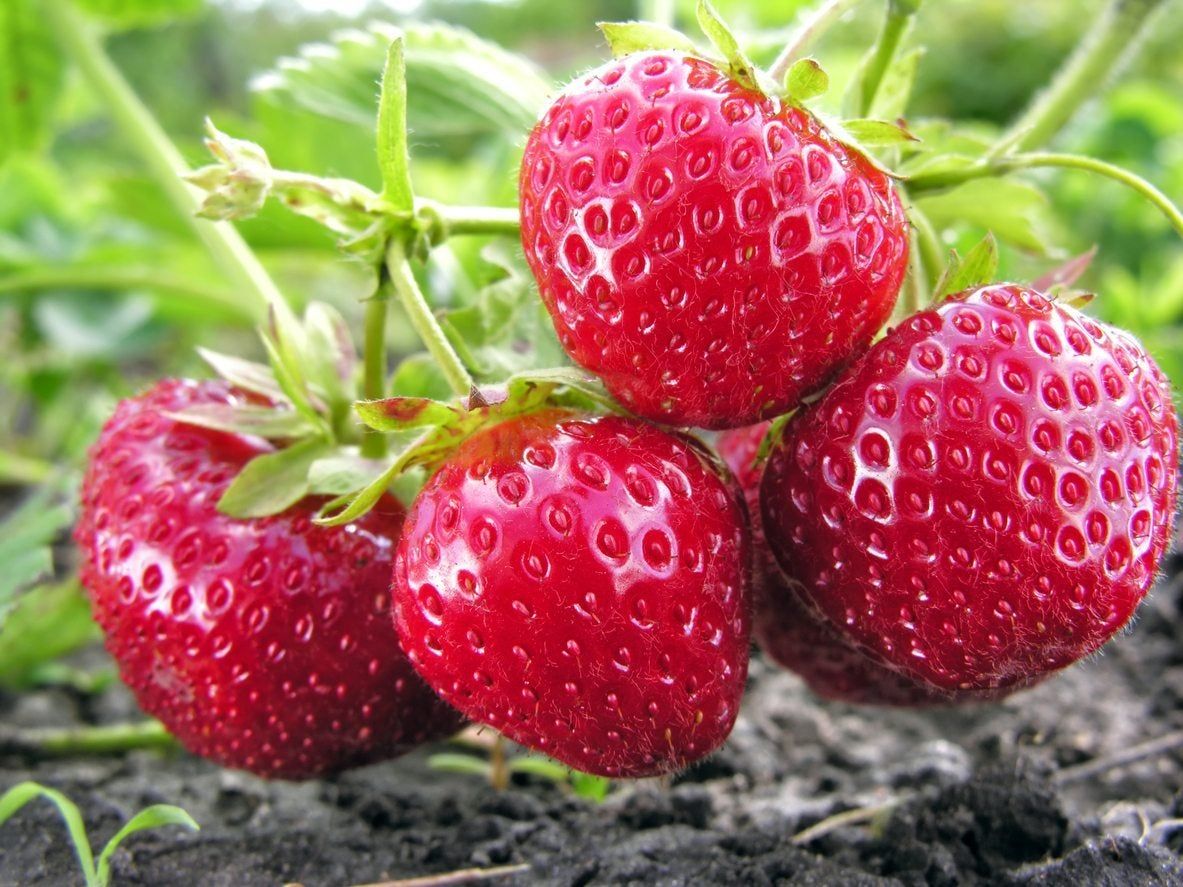For strawberry lovers, few gardening decisions are as pivotal as choosing between everbearing and June bearing varieties. While both offer that sweet, succulent strawberry flavor, their growth habits and fruiting patterns differ significantly. Understanding these key distinctions will ensure you select the right types for your climate, space, and harvesting preferences.
A Quick Overview
June bearing strawberries, as the name suggests, produce a single flush of fruit in early summer (typically June in many regions). The plants put most of their energy into developing large, sweet berries over a condensed 2-3 week harvest period.
Everbearing varieties yield smaller crops throughout the growing season from late spring until fall. You’ll get the first light harvest in June, followed by further intermittent pickings over the summer and early autumn months.
While June bearers generate more impressive individual fruit, everbearers provide continuity of harvest. Now let’s explore some specific contrasts between the two in greater detail:
Growth Habits
-
Plant size: June bearing plants are typically larger, more robust and vigorous than everbearing types. They can spread extensively via runners.
-
Runners produced: June bearers generate abundant runners that fill out rows, while everbearers have fewer runners.
-
Leaf shape: Everbearers usually have smooth, rounded leaf edges compared to serrated leaves of June bearers.
-
Flowering: In June bearers, flowers arise from secondary crowns for a spring harvest. Everbearers produce flowers on primary crowns for extended harvests.
Fruit Characteristics
-
Individual berry size On average, June bearing fruits are noticeably larger than everbearing varieties
-
Flavor intensity The condensed harvest of June bearers often develops more concentrated sugar and flavor than the intermittent everbearing crops.
-
Fruit shape: June bearers frequently have conical, pointed fruit while everbearing berries are more rounded.
-
Yield per plant: Total annual yield per everbearing plant is lower than June bearers, but harvests are spread out.
-
Peak harvest seasons: June bearers peak in early summer while everbearers have a primary June harvest and secondary fall crop.
Climate Adaptability Differences
-
Hot summers: Everbearers perform poorly during hot summers, while June bearers thrive, especially when provided ample water.
-
Cooler areas: Everbearing varieties fare better in zones with cooler summers, producing fruit in spring and fall.
-
Winter hardiness: June bearers typically withstand winter cold better than less hardy everbearing plants.
-
Sun exposure needs: Everbearers require more sunlight exposure to fruit properly compared to June bearing plants.
Pros and Cons of Each Type
June Bearing Advantages
-
Produce impressively large, sweet berries over a few weeks
-
Generate abundant runners that expand plantings
-
Withstand cold better and perform well in hotter zones
-
Require slightly less care as harvest period is more condensed
June Bearing Disadvantages
-
Limited to a single harvest window rather than staggered yield
-
Larger plants require ample space for sprawling growth
-
Heavy fruit load can flatten plants, requiring support
Everbearing Pros
-
Provide smaller harvests from late spring through fall
-
Compact growth habit suits container gardening
-
Ideal for cooler northern zones with shorter summers
-
Lower maintenance as harvests are more spread out
Everbearing Cons
-
Smaller berries with milder flavor compared to June bearers
-
Productivity declines during hot summer conditions
-
Require rigorous pruning to maintain plant vigor
-
Higher sunlight needs for adequate fruit production
Which is Right for You?
Good for June Bearing
- Preserving large harvests of berries
- Growing in hot summer climates
- Maximizing per-plant yields
- Limited space with vertical gardening
Good for Everbearing
- Staggered harvests over many months
- Cooler northern gardens with mild summers
- Planting in containers
- Avoiding large-scale preservation
Ultimately, assess your specific climate, space, harvesting preferences, and intended use of the harvest when deciding between June bearing and everbearing strawberries. Choose the right types to create your ideal perpetual strawberry patch!
Which Type of Strawberry Should You Choose?
The choice between June-bearing and ever-bearing strawberries largely depends on your personal preferences and your climate. If you live in a colder area and want to grow a lot of strongly flavored strawberries, June-bearing strawberries might be the best choice for you. Strawberry plants that bear fruit all year may be better if you live in a warmer area or want fruit for a longer time of the year.
It’s worth noting that some gardeners choose to grow both types of strawberries in order to get the best of both worlds. They may plant June-bearing strawberries for their large, flavorful berries, and ever-bearing strawberries for a steady supply of fruit throughout the summer.
June-Bearing vs Everbearing Strawberries
Strawberry is one of the most popular fruits that can be grown in a home garden. They’re not too hard to grow, and if you give them the right conditions, they can give you a lot of sweet, juicy berries. There are two main types of strawberry plants: June-bearing and ever-bearing. In this article, we’ll explore the differences between June-bearing and everbearing strawberries.
(Featured : Strawberries by Ewan Traveler)
June Bearing vs Everbearing Strawberries – Garden Quickie Episode 162
FAQ
Are everbearing strawberries better than June bearing?
How many years will June bearing strawberries produce?
What is the difference between June berries and strawberries?
How to tell if strawberries are everbearing?
- The Ultimate Guide to Growing Strawberries in Raised Beds - August 8, 2025
- No-Dig Garden Beds: The Easiest Way to Grow a Beautiful Garden - August 6, 2025
- How to Protect and Preserve Wood for Raised Garden Beds - August 6, 2025

